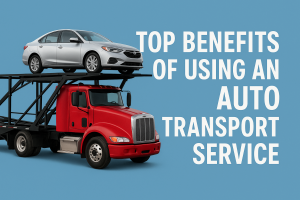Following a few tips ensures your next vehicle purchase is a smooth process.
Key Takeaways
- Purchasing a vehicle is exciting.
- The process is changing for buyers because of online shopping.
- You’ll still need to ensure the vehicle is in good shape before buying.
- Mercury Auto Transport can assist when making an out-of-town purchase.
Purchasing a new-to-you car or truck is exciting, but it can also cause anxiety. Where do you look? How do you know the vehicle is in good shape? Are you getting a fair deal?
You’ll want to answer these questions before finalizing your purchase. Understand that the car-buying process has changed considerably over the past decade or so. You can now handle almost part of a transaction online, allowing you to expand your search for the perfect automobile.
Here Are The 7 Steps for Buying a Used Car in 2023
Step 1: Figure Out How Much You Can Afford
Buying a used car can be an exciting experience. You get to explore your options and find the perfect vehicle for you. The best way to ensure you get a reliable used car that won’t break the bank is by figuring out how much car you can afford before you start looking.
There are three things that determine how much car you can afford: How much money you make, how much debt you have, and how much money is already set aside for future expenses.
If you have a set amount in mind that you want to spend on the car, make sure that amount includes all fees associated with buying the vehicle: taxes, registration fees, any optional warranties or service plans and any additional expenses that may come up during the course of ownership such as insurance premiums or maintenance costs.
Suggested Read: How to Save Cash When Buying and Shipping Out-of-State Vehicles
Step 2: Identify The Vehicle You Want
Of course, the entire car-buying process begins by identifying the exact make and model you want, or at least narrowing your search to a few options. This research can be time-consuming, but many shoppers enjoy learning so much about various automobiles on the market.
When researching vehicles, consider budget, gas mileage, seating, cargo room, reliability, crash rating, towing power, and winter-driving rating, among other factors. List attributes that are important to you and begin your search. Once you know what you’re looking for, you can search for dealerships with the vehicle in stock.
Step 3: Find a Dealership
In the past, identifying dealerships with your desired vehicle in stock was challenging. You’d often have to drive around town searching for cars that met your parameters and fit within your budget.
Online car shopping streamlines the entire car-buying process because you can find the exact vehicle you want on your smartphone using local dealerships’ websites or the various online car-search services available.
When shopping online, you can look for options in other cities or states without traveling there. This feature makes it far more likely you’ll end up with the car you want at a price you can afford.
Step 4: Take a Test Drive
When buying a vehicle locally, the next step is taking a test drive. Just because a car meets all your predefined parameters doesn’t mean it’s right for you. As you take the vehicle for a spin, consider the headroom, legroom, and seat comfort. Ensure the steering wheel is in a comfortable position or can be adjusted if necessary.
You’ll also want to see if the check-engine light is on, listen for strange engine sounds, inspect the tires, and smell for burning oil or leaking gas. Check under the hood for leaks and ensure the air conditioning and heat work properly, too.
The test drive is your chance to learn the vehicle before committing; take advantage of your time with the car.
Step 5: Check The Title and History Report
Every vehicle has a history. Unless you’re buying from a trusted family member or purchasing a brand new car, you’ll want to look at a history report and the title before finalizing the deal.
The car’s title will ensure the seller is the vehicle’s valid owner, which is vital when buying privately. The title might also reveal if the car falls under a state lemon-law program, was previously written off, or incurred flood damage. Remember that this information is only on the title document in certain states.
Obtaining vehicle-history reports is essential before buying a car. Organizations like CARFAX and AutoCheck provide information based on the car’s VIN, relaying past accidents, maintenance, and previous owners. Most car dealerships will provide you with a free report, but it’s worth buying yourself when they do not.
Step 6: Get an Inspection
Taking the car to a third-party mechanic for an inspection could save you time and money. Many mechanics are incredibly busy, so getting in for a spur-of-the-moment inspection could prove challenging. Therefore, booking an appointment ahead of time could be your only option for getting a used-car assessment.
When buying an out-of-state car, you can’t take it for an inspection beforehand, increasing the risk of problems.
Step 7: Negotiate The Deal
Once you identify the ideal vehicle, take it for a test drive, and ensure the history report and title are clear, you can negotiate the final price with the seller. The amount of wiggle room varies based on the vehicle, dealership, and salesperson, but discounts are usually available.
It’s best to have an idea of what you’re willing to pay for the car before arriving at the dealership; start negotiations below that mark. The salesperson will usually meet you in the middle, which should be close to any reasonable budget.
Buying an Out-of-State Vehicle
Finding a great car in another city or state makes buying more challenging, but it isn’t impossible. You can still read car-history reports and haggle on the price, and it’s often easier to find a great deal when expanding your search. You can hire a car-shipping carrier to deliver the vehicle to your home.
Mercury Auto Transport is a vehicle shipping broker that can help you find a carrier. We deal exclusively with FMCSA-licensed and insured carriers, minimizing the chances of something going wrong during transport. Reach out to Mercury Auto Transport today to receive your free quote.






